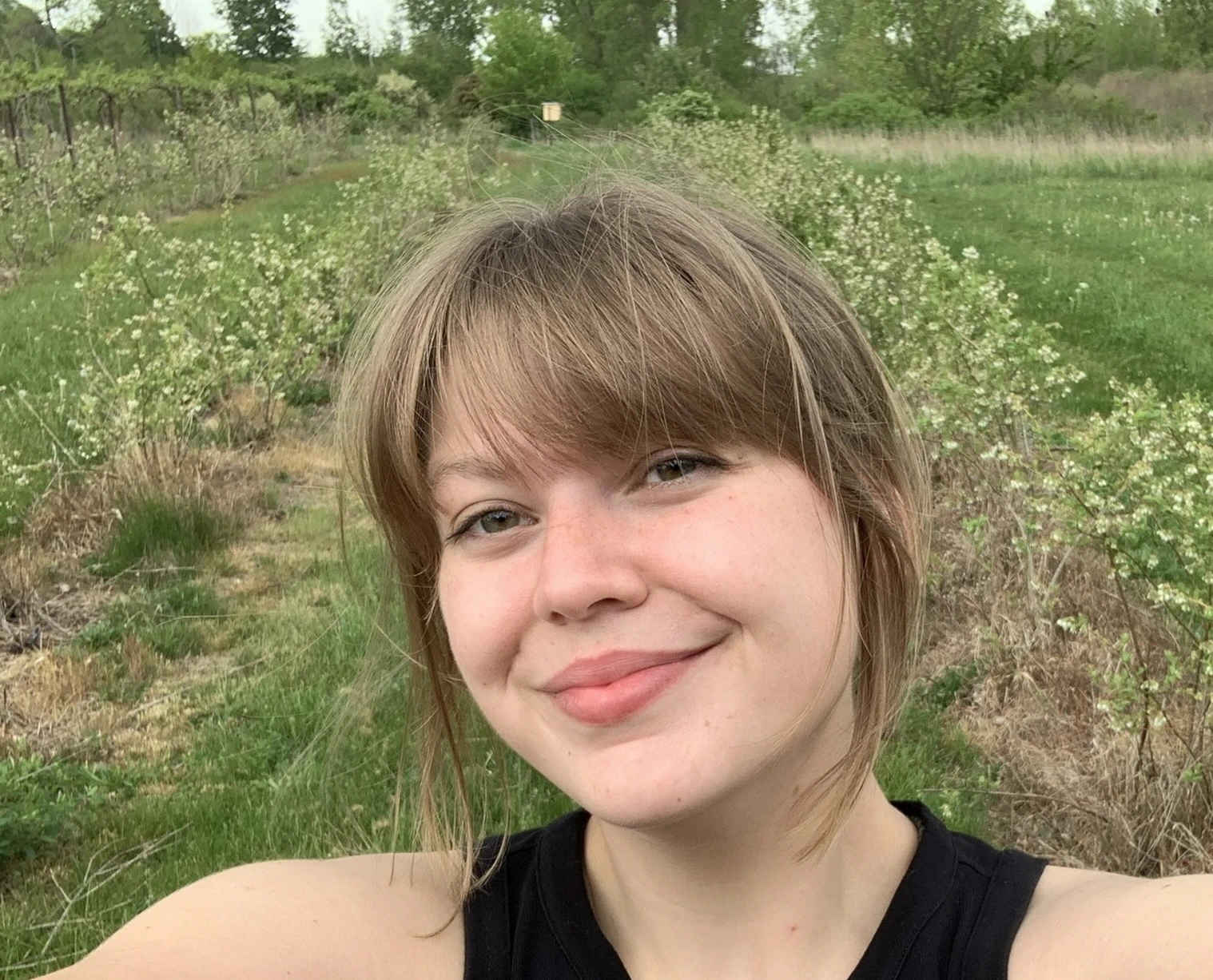Extreme heat during bloom affects pollen in ways that harm native pollinator reproduction and survival.
High temperatures, which negatively affects pollen germination and fertilization in blueberry plants, can also impact native bees reproduction and survial, as they rely on pollen for their diets.


Jenna Walters, PhD., a recent MSU Entomology graduate, published her research in the Proceeding of the Royal Society B on the effects of indirect heat stress on native bee behavior, development, and survival. The research shows how high temperatures, which negatively affects pollen germination and fertilization in blueberry plants, can also impact native bees, as they rely on pollen for their diets.
Heat Wave
There was unusually hot weather in west Michigan in late May 2018, the same time blueberries were in bloom. Walters observed that yields were down that year and proposed that the extreme heat during bloom had disrupted the normal pollination process. In a separate research paper, Walters showed that the heat had disrupted pollen germination and pollen tube growth of blueberry pollen grains exposed to extreme heat, even for just 4 hours.
Because pollen is one of the sole food sources for bees, the next step was to find out how this heat-treated pollen affected native bee behavior, development, and survival. In this study, Walters and her team of undergraduate researchers (McKenna Barlass and Robin Fisher) exposed blueberry bushes to extreme heat conditions, similar to those observed in 2018. They also had a control group of plants that did not receive that heat exposure, experiencing temperatures historically typical of Michigan springs. Both the heat-treated plants and the control plants were then put in separate cages with blue orchard bees (Osmia lignaria), a native species, released into those cages to collect pollen and lay eggs.
A Packed Lunch
Osmia lignaria bees nest in cavities, like hollowed-out plant stems, and typically lives for 3-5 weeks in the spring. To feed their offspring, female blue orchard bees collect pollen provisions consisting of primarily pollen with a little nectar. When the mother has collected enough, she rolls it into a ball, lays an egg on it, and seals it into a chamber using mud. She will repeat this process over and over throughout her lifetime. That “packed lunch” gives the larvae everything they need to develop through the spring and summer, hibernate during the winter, and finally emerge the next spring as adults.
The study shows that when female bees only have access to heat exposed plants and the pollen they can get from them, they lay fewer eggs and the majority of larvae don't survive. This is despite bees from both groups having similar access to floral resources, similar foraging efforts, and similar amounts of pollen provided to larvae. Walters and the team also saw that larvae who consumed pollen from heat stressed plants resulted in fewer adults that made it through the winter, and additionally, those few survivors had shorter lifespans.
Co-author and Walters Ph.D. advisor Rufus Isaacs, Ph.D. noted that “If there’s fewer bees developing, that could feedback later in the form of reduced pollination from wild bees. This might also partly explain why we’re seeing declines in these bee species.” Walters is working on a follow-up project to understand the changes to the actual nutritional make-up of the pollen itself as a result of extreme heat exposure.
The Blueberry industry in Michigan is worth about $100 million in terms of farm gate value. The yield reduction in 2018 costed the industry $30 million in losses compared to just the year prior. “This research is a huge return on investment for the growers.”, Isaacs said. “And the two co-authors on this paper, who worked in the lab, were undergraduate students from both biology and plant biology. They both did an amazing job, and we couldn’t have done this research without them.”
Going forward, Walters sees the results of the research in terms of larger systems. “. I think once we have a better understanding of how extreme heat and climate change affects plant-pollinator interactions, native bee populations, and food production, we can start to develop mitigation strategies. which could not only help protect bees, but also benefit farmers and the community at large by ensuring good crop production and high quality, nutritious food. “



 Print
Print Email
Email
